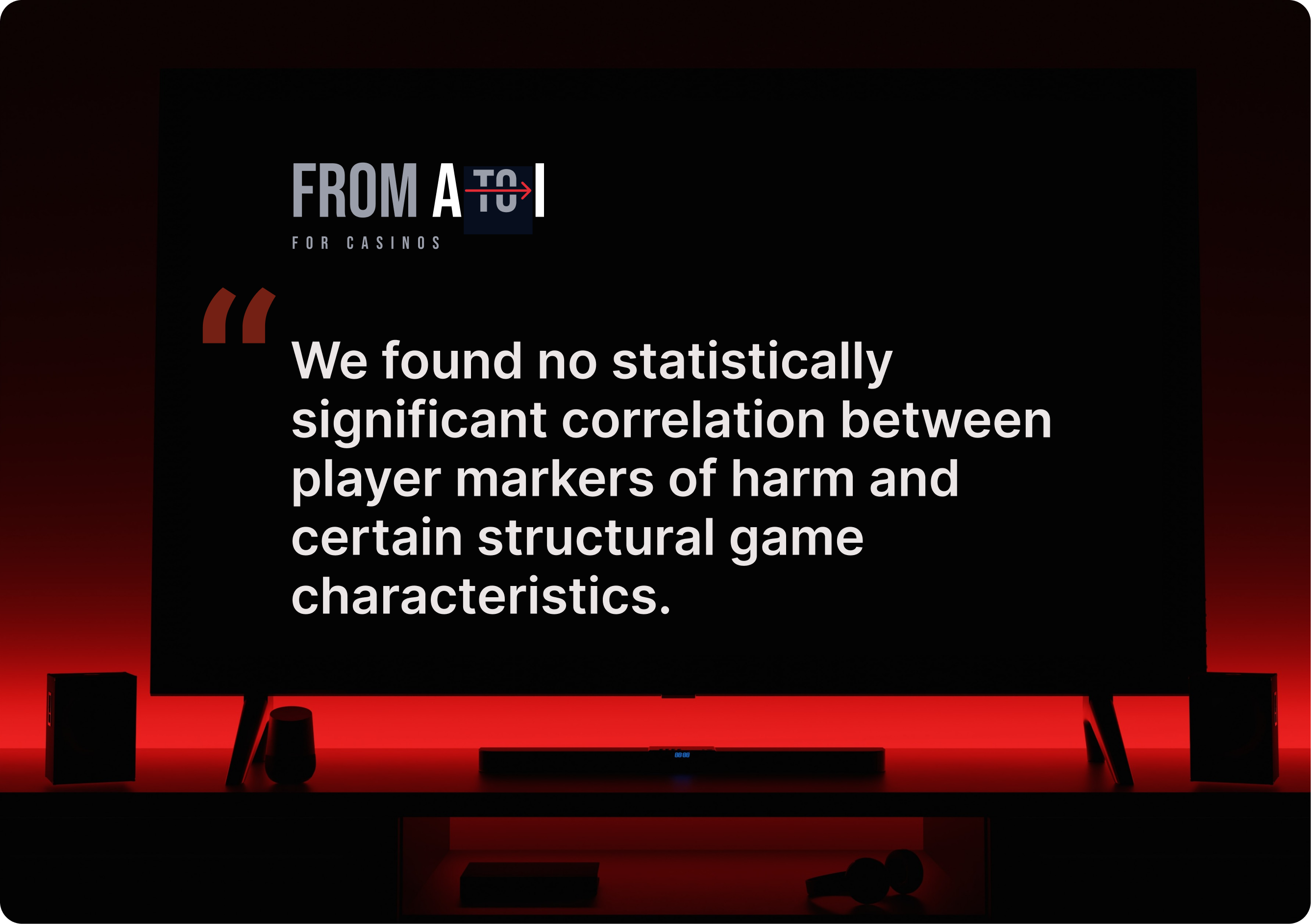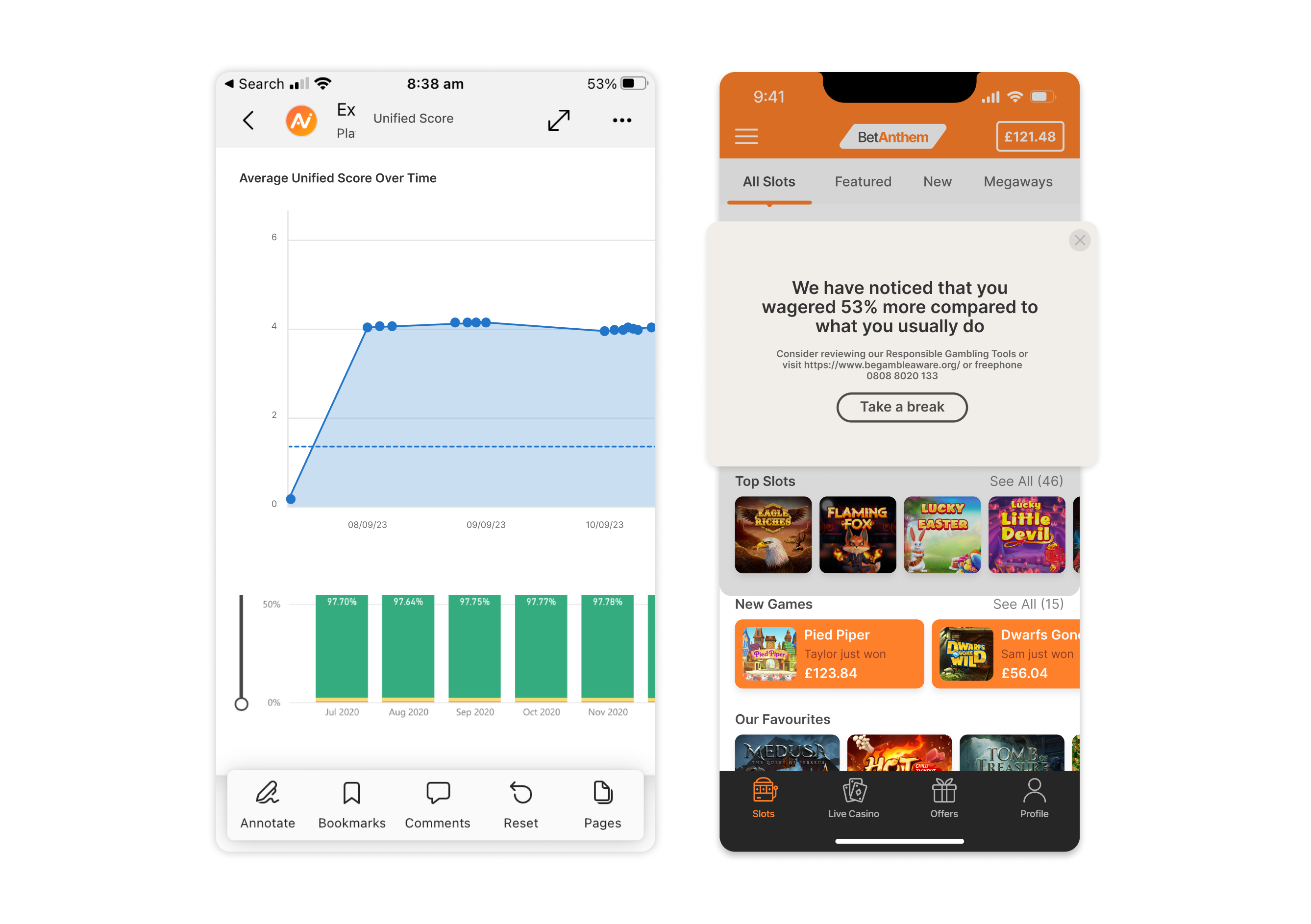Welcome to the second chapter of our new series, From A to I: 9 AI Use Cases to become the Netflix of Casinos. Read the other chapters here.
In this use case, we’ll continue diving into how Netflix creates sustainable play, and explore their approach to player scoring.
Why Netflix?
Read the series intro here and sign up here to receive the new blogs, as soon as they come out.
Here are three key learnings about player scoring:
1. Correlating behaviours with content
Netflix has always been keen to not just refer to content and viewers as separate entities, but to analyse the relationship between the two. Which groups of players watch certain movies? What viewing behaviours are correlated with certain TV shows? Are certain watching patterns more prevalent with certain content sequences?
While both Netflix and casinos report on similar financial metrics within their earnings reports, they rely on very different revenue models. Those models, monthly subscription and cost of play lead to different objectives and incentives. Netflix are much more focused on engagement, while operators tend to lead with metrics like ARPU.
As such, Netflix has written:
Success in streaming starts with engagement. It’s our best proxy for customer satisfaction and when people are watching they are more likely to stick around (retention) and recommend Netflix to their friends (acquisition).
Netflix proudly demonstrate which content on their platform has the highest hours viewed, but they also consider which content works best for different audience types.
Note: for the first time, Netflix have gone beyond sharing the viewing hours for their top 10, and have released all 18,000 titles that have received more than 100,000 hours of viewing.
What casinos can learn
In a similar way to how Netflix tries to analyse content watched and viewing patterns, casino operators should analyse the relationship between games played and player behaviours. Unlike Netflix, gambling operators need to actively consider the recommendations they offer to players, reducing risky play where possible. And while Netflix chooses to have a category for binge-worthy content, operators may choose to consider filtering out certain games where high-risk play is prevalent. To better understand the correlation, Future Anthem previously partnered with Gamesys (now Ballys) to research the impact of casino games on player markers of harm. In summary, after modelling 36 million gaming sessions, we found no statistically significant correlation between player markers of harm and certain structural game characteristics.

While you might not choose to remove games entirely due their connection with markers of harm, it is always recommended to undertake a similar analysis on your own portfolio. By understanding the characteristics, metadata, and the type of play that exists on your games, you can make better decisions and consider filtering recommendations to create sustainable play.
2. Understand what happens within a piece of content
Within every watching ‘session’, Netflix is able to glean very powerful data. Yes, there is the more commonly referenced ‘hours watched’ and ‘daily active users’… but this doesn’t really scratch the surface of what is available.
Most notably, what becomes really interesting is what happens within an individual watching session.
Let’s take someone watching an episode of Suits, series 1, episode 4. Traditionally the main learnings would be based on the percentage of those who started the episode and ended up completing it. But there are many different data points that are also worth considering, such as:
- If and when was the content paused?
- How long was the pause?
- Was it rewound at any point?
- Were any features, such as subtitles, utilised?
- When did the viewer leave?
- Where did they go next?
By understanding what happens within a session, they can provide you with a more personalised experience and lead to longer-term sustainability.
As a fun tangent, Netflix even acknowledged the importance of knowing the exact moment to pause a programme by marketing a sock that knows when you’ve gone to sleep. It’s as peculiar as you would imagine:
The sock in question
What casinos can learn
Similarly to how Netflix not only considers the overall ‘session’, but what happens within it, such a level of granularity should be considered by casinos.
Being able to learn how players interact with game mechanics, vary their spend and time between bets or velocity of change is important to observe and act upon.
As such, Anthem have created a feature called Unified Score, whereby, it considers the changes in risk and positive play for every player on an individual basis.
Additionally, it classifies categories for various changes, such as ‘erratic play’. By understanding the key details, an operator can make more informed decisions in the moments that matter.
3. Tracking a player's state
Understanding a player's individual state is key to tracking their trajectory, and the various aspects that have impacted their current path.
At any given time, Netflix subscribers are neither in a state of joy, or on the verge of leaving. Depending on various factors, every subscriber currently holds a different relationship with the service. As such, while it is helpful to undertake a snapshot of where their subscribers sit at any given point, the key is in tracking their state over time.
This is essential to player churn, which we’ll return to in another use case, but it is also key to long-term sustainability.
Take the case of those who tend to Binge, a portion of those will get to a point where either the content appears unsatisfactory, or they feel a change is needed, and they leave the service, as well noted here.
What casinos can learn
Part of the term ‘sustainability’ requires a more long-term approach to player engagement, what actions have been taken, and how does that impact the level of risk in their play.
Part of Future Anthem’s Sustain module involves tracking the risk score of a player over time, such that someone in customer support or compliance, for example can make more informed decisions with clearer explainability.
Scoring players and scoring content is a key AI use case that all casinos must consider beyond just responsible gambling. It provides a key insight into individualised play that provides better recommendations and more personalised experiences, for everyone.

Learn more about Amplifier AI
To keep in the loop and be the first to see them, sign up here, and you’ll be emailed on their release.
Attending ICE? Register for our exclusive events or book a demo, and one of our specialists will walk you through the use cases that make the most sense for you.


.png?width=2000&height=540&name=Blog%201%20Banner%20(1).png)